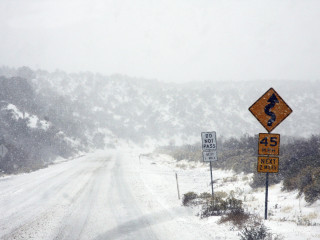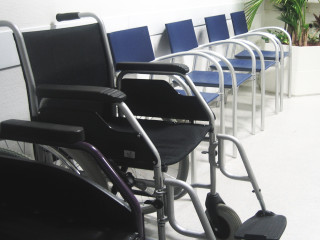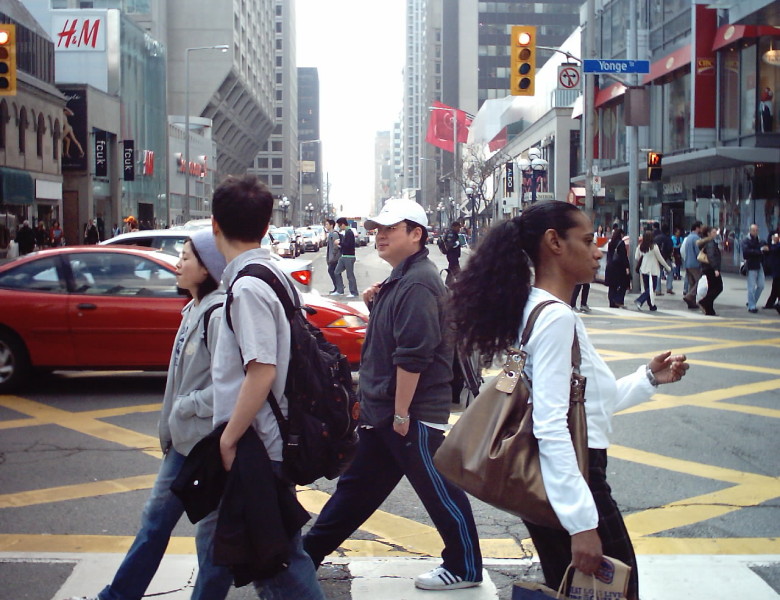Pedestrians Crossing, Bloor and Yonge by Gary J. Wood, licensed under CC Attribution – Share Alike 2.0 Generic.
As we break free from the long, dark days of winter, many people are anxious to get outdoors, enjoy the weather and get active.
Over the past weeks, the OTLA blog has reminded us to be safety conscious as we hit the streets on our motorcycles or begin to enjoy other fair-weather activities such as cycling and long-weekend road trips. It is equally important that we be mindful of our safety as pedestrians.
Last year, there were 40 pedestrian fatalities in Toronto, the highest in 10 years and an increase of 43 per cent over 2012. An interactive map plotting these pedestrian fatalities is available.
The fatality increase follows the Ontario Coroner’s Pedestrian Death Review released in 2012. The Review investigated 95 pedestrian deaths in Ontario in 2010 and made 26 recommendations in the areas of road safety and death prevention.
Pedestrians were found to be the most vulnerable road users and account for almost a quarter of the traffic fatalities in Canada. Of the 95 pedestrian deaths investigated, 60% were killed while attempting to cross arterial intersections in urban areas with a high volume of traffic.
While the Review found that the highest month for pedestrian deaths was January, there was also a reported spike in early spring and late summer. In addition, MP3 player and cell phone usage by pedestrians was found to be a contributing factor in increasing the likelihood of a collision. This stresses the importance of remaining aware of our surroundings as we begin to run or walk outdoors which includes keeping our music volume at an acceptable level to allow us to hear approaching traffic, vehicle horns, or other audible warnings.
From a legal liability standpoint, the Ontario Highway Traffic Act imposes a reverse onus on a driver who strikes a pedestrian on public roadway. This means that the driver is presumed be negligent unless they can prove otherwise. That said, the Courts have found that pedestrians have an obligation to exercise care for their own safety and act reasonably and rationally, otherwise, they may be found to have contributed to their own loss.
The Coroner’s Review concluded that the vast majority of pedestrian deaths were preventable.
Let’s all do our part to stay safe this spring!
Contributed by Michael Giordano, an OTLA member and lawyer practising with Sal Guzzo Professional Corporation in Mississauga, Ont.
Photo credit: Pedestrians Crossing, Bloor and Yonge by Gary J. Wood, licensed under CC Attribution-Share Alike 2.0 Generic.














1 Comment